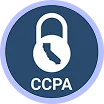The Complete Guide to Proxy Error Codes and Their Solutions
Proxy errors happen when your computer fails to access a website while you’re using a proxy. HTTP codes reveal if it’s a client-side or server issue.


Have you tried to access a website with a proxy, but have only gotten a cryptic proxy error code as a result?
Proxy servers are incredibly useful for accessing geo-restricted websites, bypassing IP bans, and web scraping. But sometimes, hiccups occur. These hiccups, known as proxy errors, happen when there is some sort of miscommunication or issue between your computer, the proxy server you’re using, and the website you’re trying to connect to. Instead of connecting to your target website, you just get a page with a numeric HTTP error code.
So what exactly do these HTTP status codes mean, and how can you overcome them to reach the websites you need to reach? This guide will teach you the full rundown to different kinds of common proxy error codes, what they mean, and how you can bypass them.
What Is a Proxy Error?
A proxy error is any error that occurs in the communication process between your computer, a web server, and a proxy server. Typically, you will know when a proxy error has occurred because instead of arriving at the website you are trying to reach, you will get a page with an HTTP error code message like “404- Not found”.
Proxy errors can prevent you from accessing websites, loading images, or connecting to certain online services, which can, in turn, interrupt important activities like research or web scraping. Understanding the specific type of proxy error code you’re facing can help you figure out how to fix it and get back to uninterrupted browsing.
Why Do Proxy Errors Happen?
Proxy errors can happen for many different reasons, and can be caused by issues on your end, the proxy’s end, or the target website’s end. Common problems include a misconfigured firewall, incorrect DNS settings, connection timeouts, an incorrect IP address, proxy authentication problems, or server outages. The list could go on. The HTTP status code and proxy error message you see usually gives insight into what went wrong.
Types of Proxy Error Codes: HTTP Status Code Classes
Ever wondered why so many status errors start with “4”, but occasionally one will start with “3” or “5”? There’s actually a meaning behind these numbers, and this meaning can help you gain insight into the nature of the error you’re encountering. Here’s a breakdown of different HTTP status code classes:

Most proxy error codes are either 3xx redirect problems, 4xx client-side problems, or 5xx server-side problems. Let’s go over some of the most common proxy errors from each of these categories.
3xx Redirection Proxy Error Codes
Redirection errors are messages that the server sends when the resource you’re trying to reach has been moved or changed. These messages are a bit like detour signs: they simply tell your browser to look somewhere else for what you’re searching for.
Often, 3xx redirect errors are mostly informational, and your traffic is usually rerouted automatically. Here are some of the most common redirect proxy error codes.
301 – Moved Permanently
The resource has been permanently moved to a new URL. Your browser will follow the new URL automatically, and no further action is typically required.
Fix: Update old URLs in your lists to the new URLs to avoid future confusion and reduce bandwidth usage.
302 – Found
The resource has been temporarily moved to a new location with a new URL. In most cases, your browser will redirect you automatically, and the original URL should work again later.
Fix: None. Because the change is temporary, there’s no need to update bookmarks or URL lists. The original URL will likely be valid once the temporary move is reversed.
304 – Not Modified
The resource hasn’t changed since your last visit. Your browser will automatically use the cached version for faster loading.
Fix: No action needed; this is just an informational status.
307 – Temporary Redirect
Similar to a 302 error. The only difference is that a 307 ensures the request method and body remain unchanged when the redirect request is made. This means that you submit a form or data on the old URL, that data will still be sent to the new URL.
Fix: None, follow the temporary URL provided and it should work.
4xx Client-Side Proxy Error Codes
These proxy errors occur on your end rather than the website or the proxy server’s end. They include some of the most common types of errors, and involve the most time and labor to solve. Here are some 4xx client-side errors you may encounter.
400 – Bad Request
This error means the server can’t understand your request due to bad syntax (or an issue that looks like bad syntax). Common causes include a broken or incomplete URL, a corrupted cache or cookies with outdated data, DNS lookup cache issues, or too-large files. Sometimes, this error can also occur because of generic server issues.
Fix: Check that your URL is properly formatted, clear your browser’s cache and cookies, and ensure all files you’re uploading are within size limits. Then, re-submit the request.
401 – Unauthorized
You see this error when you need to log in or provide authentication to access the resource, and your credentials are missing or incorrect. This is common in restricted areas of websites.
Fix: Log in with the correct credentials or contact the site admin for access.
403 – Forbidden
You don’t have permission to access the resource, regardless of having proper authentication. Unlike a 401 error, logging in or providing extra authorization won’t help.
Fix: Check if you have the right permissions for the resource. It may be intended for restricted users or roles.
404 – Not Found
This is the most common error. It signifies that the server can’t find the requested resource, usually due to an incorrect URL or a moved/deleted page.
Fix: Verify the URL for typos or use the website’s sitemap or search feature to locate the resource.
407 – Proxy Authentication Required
This error means the proxy server needs to verify the identity of the client with proper credentials to grant access.
Fix: Enter the correct username and password for your proxy server or check with your proxy provider or network administrator to find the proper credentials.
408 – Request Timeout
The server timed out waiting for your request. This might be due to network latency, slow internet speed, or server overload.
Fix: Refresh the page. If the issue persists, check your network settings, use faster proxies, or wait for the server to become less busy.
429 – Too Many Requests
You’ve sent too many requests from the same IP address in too short a time and have triggered rate limiting from the server. People who use static IP proxies, like ISP proxies, are more likely to encounter this error.
Fix: Reduce request frequency, or use rotating proxies to switch IP addresses before you trigger rate limits. If the issue persists, consider implementing a backoff algorithm to better manage your requests.
499 – Client Closed Request
You closed the connection before the server could respond. This is common when a client disconnects or times out before the server finishes processing the request.
Fix: Check and improve your network stability to ensure your client is configured to wait a sufficient amount of time for a response. If you’re using a web API, review and adjust timeout settings to increase the timeout value. If frequent timeouts are occurring because of server slow server responses, try optimizing your server’s performance or contacting the server administrator for further assistance.
5xx Server-Side Proxy Error Codes
Server-side HTTP proxy errors occur due to proxy server issues or website server issues rather than issues with your request or your settings. These types of website access errors are more complicated because they usually require action from the server administrator to resolve. Here are some common 5xx HTTP error codes you may encounter.
500 – Internal Server Error
A generic proxy error indicating a problem on the server side, with unclear specifics. This could be due to a server misconfiguration or an issue with the server’s software.
Fix: Refresh the page or try coming back later. Unfortunately, there’s not much you can do aside from waiting for the server admin to fix the error.
501 – Not Implemented
The server can't fulfill the requested function. This is often due to a server configuration issue only the server admin can solve. However, when encountered while using a proxy, it could also mean your proxy server isn’t fully compatible with the website you’re trying to visit.
Fix: Try switching to a different proxy or bypassing using a proxy altogether.
502 – Bad Gateway
One server (whether its the web server, your proxy server, or even your device acting as a server) has received an invalid response from another server. This is common with proxies because proxies complicate the communication process between servers.
Fix: Refresh the page or check your proxy server settings. You may just need to wait until the web server admin fixes the issue.
503 – Service Unavailable
The server is down or too busy to handle your request. The issue could be temporary or permanent. When using a proxy, this error could mean the proxy server itself is overloaded.
Fix: Refresh the page or switch to a better proxy provider.
504 – Gateway Timeout
The proxy server didn’t receive a timely response from the upstream server. This could happen because of network issues or an overloaded server.
Fix: Wait and try again later.
505 – HTTP Version Not Supported
The server doesn’t support the HTTP protocol version used in the request. This is a rare error that typically happens when your proxy server or browser is outdated.
Fix: Update your browser or use a different one that supports the required HTTP version.
.avif)
3 Quick Fixes for Common Proxy Errors
HTTP proxy errors can be frustrating, disruptive, and overwhelming to deal with—especially with how many different kinds of proxy error codes there are. . Thankfully, there are a handful of quick fixes that can often resolve the most common web proxy errors, regardless of their cause.
Here’s a rundown of immediate steps you should take to solve proxy errors before trying any more complicated network troubleshooting.
1. Refresh the Page
The first and easiest action to try is simply refreshing the web page. Sometimes, the issue causing the error code is temporary, like a brief server glitch or a momentary network hiccup. A quick refresh can often set things right.
2. Check Proxy Settings
Incorrect proxy settings are a frequent cause of proxy errors. Make sure your settings are configured correctly in your browser or other application settings. If you’re not sure what the proper settings are, you might want to consult your network administrator or refer to the proxy documentation provided by your proxy service.
3. Clear Your Browser Cache
Your browser stores cache files to make websites load faster, but sometimes these files get corrupted and lead to proxy errors. Clearing your browser cache can remove these corrupt files and solve the issue. Navigate to your browser settings, find the cache or storage section, and clear the cached files.
Special Cases: Platform-Specific Proxy Errors
While many proxy errors are common across various platforms, some are specific to particular websites or services. These specialized errors can be particularly frustrating because they aren’t as well-documented and can be trickier to resolve.
In the following section, we’ll tackle how to fix proxy errors that are unique Youtube, as this platform leads to some of the most common proxy and internet connection problems.
How to Fix the YouTube 429 Error

A “YouTube 429 Error” typically indicates that you’ve sent too many requests in a short time and have become a victim of Youtube’s rate limits. This is common when using a shared proxy, or a proxy IP multiple people can use at once.
The most straightforward solution is either to switch to a dedicated proxy or to implement a rate-limiting mechanism to control your requests. You can also consider using rotating proxies and configuring them to rotate to a new IP every time you’re about to hit Youtube’s rate limit.
Benefits of Using High-Quality Proxy Servers
While we have provided many solutions to fix proxy errors, the best approach is to prevent proxy errors before they have the chance to occur. One of the best ways to do this is to use a high-quality proxy servers. Investing in a quality proxy server offers numerous advantages that can dramatically enhance your online experience, such as:
Enhanced Privacy and Security
A good proxy helps shield your IP address, making it tougher for hackers to target you.
Faster Loading Times
Quality proxies often come with caching capabilities, speeding up access to frequently visited websites. A good example would be using a residential proxy IP provided by a real person who often visits Amazon. When you use that IP to access Amazon too, the website will load faster.
Bypass Geo-Restrictions
Easily access region-locked content, broadening your scope of accessible information.
Reduced Error Rates
High-quality proxies are less likely to cause issues, offering a more stable and reliable connection.
Efficient Data Scraping and Automation
Good proxies can handle more concurrent requests, making them ideal for data scraping or automation tasks.
By choosing a top-notch proxy server, you’re setting yourself up for a smoother, more secure, and more versatile online experience.
Final Words about Proxy Errors
Understanding and managing HTTP proxy errors is crucial for maintaining a seamless browsing experience. If you’re seeking a top-notch, AI-optimized proxy solution that dramatically minimizes the occurrence of annoying errors like 429, 501, 503, or 408, Nimble is your go-to choice.
Our advanced proxy technology ensures a smoother, more reliable, and secure browsing and scraping experience that automatically bypasses IP bans, geo-restrictions, and proxy errors. You can learn more about our high-quality rotating residential proxies here, or, if you’re looking for effortless scraping without the headache of operating everything by yourself, check out Nimble’s web scraping APIs.
FAQ
Answers to frequently asked questions
.avif)











